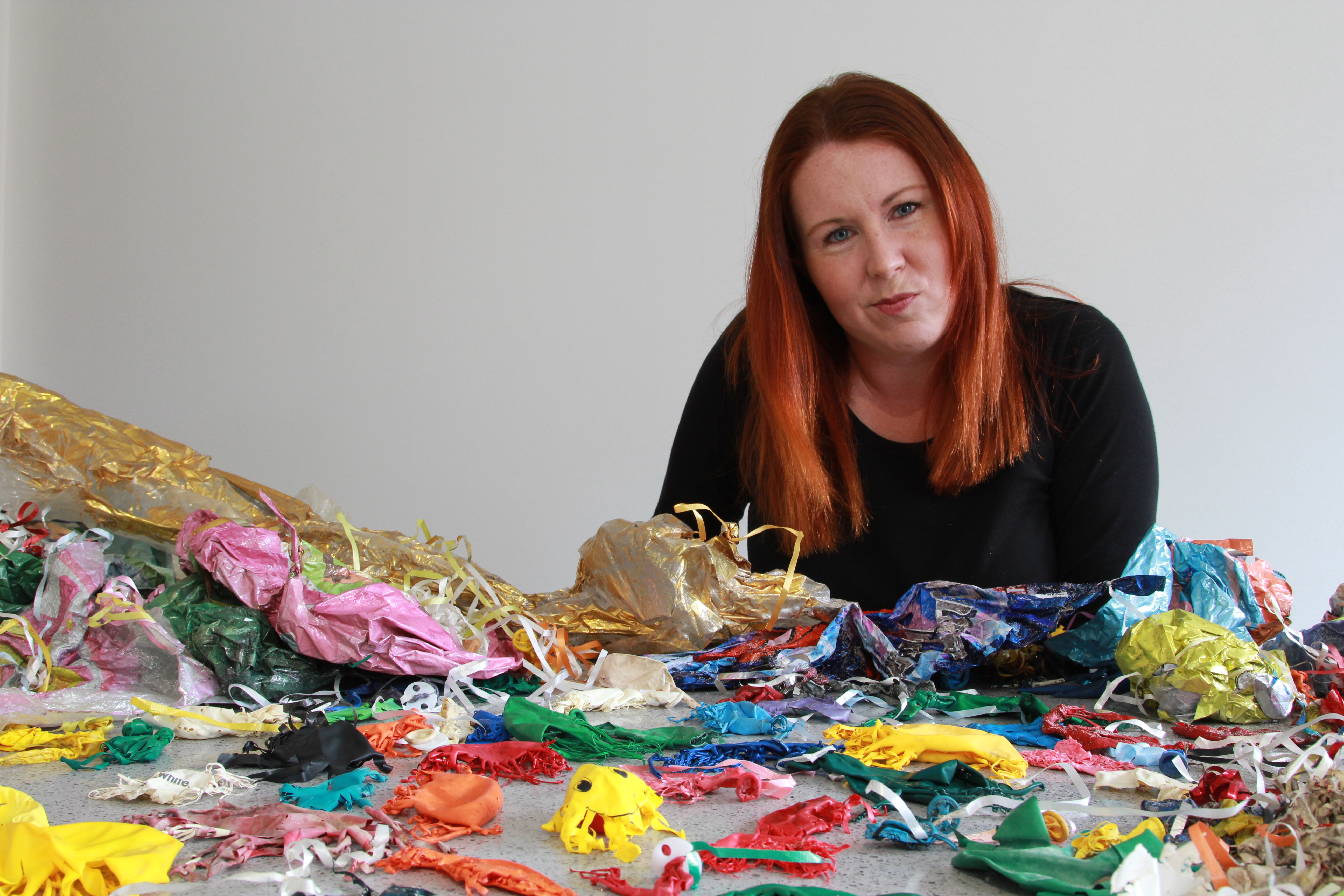
This post has recently been re-posted on the environmental blog, 1 Million Women.
One of the more common questions I am asked is why am I so focussed on balloons when there are so many more prevalent (and it could be argued, worse) types of marine debris? For example, straws and cigarette butts are virtually everywhere but you could go weeks or months without finding a littered balloon.
Well, here are my my top three reasons for getting so fired up about balloons.
( .. I’ll skip the obvious one – the whole Rubber Jellyfish Phenomenon thing. Most of you that have been following the updates of this documentary would already know by now that when balloons burst high in the earth’s atmosphere they burst into bizarre jellyfish-looking shapes and become prey to sea turtles, sea birds, and many other species that eat jellyfish and other gelatinous creatures naturally. )
But also …

Balloon litter collected on the Great Barrier Reef. Photo courtesy of Christian Miller and Tangaroa Blue
1. Balloons may not ever biodegrade in salt water. I spoke with a researcher in Holland as part of Rubber Jellyfish filming who had studied the degradation of latex in ocean water and found that balloons actually increase in mass when immersed in the sea because they absorb salts from the water! This is pretty disturbing considering 70% of the Earth is made of ocean. Other studies have immersed latex balloons in salt water for 12 months and at the end of the study period, the balloons were still intact and recognisable as balloons. If they do break down in salt water at all, it takes over a year which is not helpful to animals who may mistake them for food.
2. Balloons fly .. Releasing a balloon into the air is a little different to tossing a plastic cup out the window (although equally disgusting). When a balloon is released, you have absolutely no idea where it is going to go. Balloons have been known to rise into jet streams and travel across entire continents like this one that traveled from the UK to Australia! Many of them land in the ocean and then travel in ocean currents, congregating in certain ‘hot spots’. One of these helium ballon ‘hot spots’ is actually the Great Barrier Reef, home to so many sensitive marine species.
But more than anything else, my number one inspiration for making this film was …
3. Most people have no idea they are doing anything wrong

Balloon release ceremonies are increasing in popularity.
It’s hard to do anything about certain litter issues like cigarette butts because people already know they aren’t doing the right thing – they know they are being a bit of a weasil. Apathy is a hard thing to deal with. The popularity of balloon release ceremonies is something totally different. I was shocked to learn that a lot of charities and not for profit groups perform balloon release ceremonies. These are amazing people trying raise awareness to important causes. I believe in my heart that this wouldn’t be happening if people understood the effects. There is a reason you don’t see charities performing ceremonial flicking of cigarettes – who would want to affiliate a good cause with this kind of inappropriate behaviour?
At the start of my film journey it did seem really weird to me, though, that so many people were under the delusion that releasing helium-filled balls of latex into the sky and then walking away is somehow not littering. How did this happen? With a little digging around I learned that it all seems to come back to point #1. I spend a lot of time in the film exploring how the international balloon industry (which is worth some pretty big bucks – according this this article by a major helium company) has lead people to believe that balloons are biodegradable and environmentally friendly. This simply isn’t true and the evidence that they always sight (comparing balloons to oak leaves, if any balloon people are reading this) is not based in science has been refuted by scientists several times. Despite this, the balloon industry has gone to a lot of time and effort to create publications and websites making it seem as though latex balloons are harmless. Here is the number two item that comes up in a Google search for “are latex balloons biodegradable?” – it’s a good example of the kind of balloon-industry propaganda I am talking about.

an example of misleading (actually, completely inaccurate) information supplied by the balloon industry)
So in a nutshell, the reason I have chosen to dedicate a lot of time and energy to this one single issue is because I believe that with widespread education, we can change public attitudes, change public behaviour, and inspire policy change! Endangered sea turtles and endangered sea birds (especially albatrosses) are particularly vulnerable to this issue. It was – and is! – an issue worthy of focused time and attention!